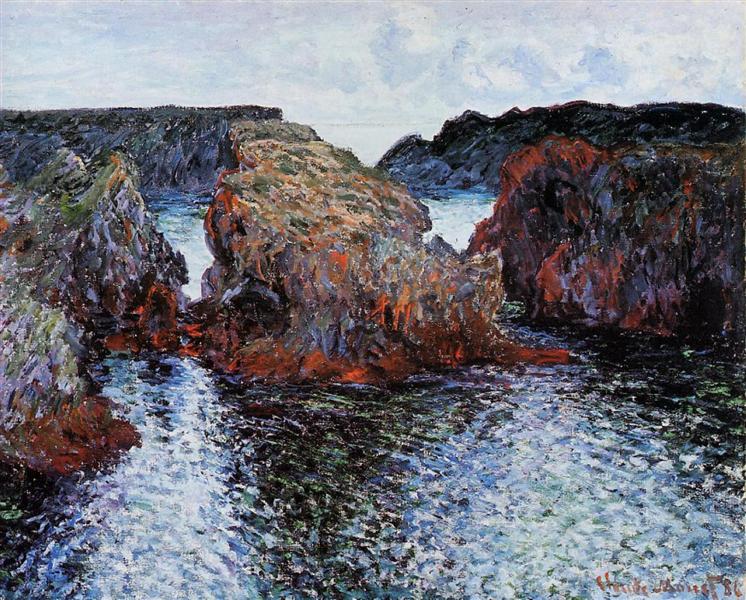Description
The work "Belle-Ila-Rocks in Port-Goulpha", painted by Claude Monet in 1886, is erected as a masterful example of the impressionist approach that defined much of the career of this renowned artist. Located on the island of Belle -î, on the coast of Brittany, France, this painting with skill is the interaction between landscape, light and water, creating an atmosphere that invites contemplation.
Monet was characterized by his desire to represent nature in his purest state, and this work is a testimony of his fascination with the natural world. The composition presents an intricate framework of rocky forms that emerge from the water, configuring a landscape of steep slopes that submerge in a calm, but active sea, in which subtle reflexes reveal the influence of the sun. The Monet's loose brush technique is manifested in the application of the paint, which allows colors to be entertained and mixed vibrantly, giving life to the rocks that seem to range to the rhythm of the waves.
The use of color is particularly notable in this work. Monet uses a palette dominated by blue and green harmonies, which are mixed with touches of gray and white. These colors not only define the shape and texture of the rocks, but also suggest the luminosity of the environment. The sky is shown in its most serene moment, with soft clouds that float in a clear plane that contrasts with the rocky solidity of the foreground. This depth layer not only creates a three -dimensional effect, but also establishes a dialogue between the elements of nature.
The absence of human figures is not an oversight, but a deliberate choice of Monet. Its objective is to focus the viewer's attention on the landscape itself, making it a silent witness of natural splendor. Through the representation of these elements, Monet invites us to experience the peace and majesty of the Belle -île coast, where nature seems to be the only protagonist.
"Belle-El-Rocks in Port-Goulphar" also encapsulates the evolution of impressionism towards a more intense exploration of light and color. As Monet worked in this series of marine landscapes, his technique became increasingly bold, and this work is a milestone in that search. An increasing influence of contemporary theories on colorimetry can be observed, suggesting that Monet was not only responding to its surroundings, but also explored the perception of light and its effect on color.
The paintings From Monet, in particular those of this same time, they tend to reflect their concern about the transience of light and the changes in the landscape throughout the day. "Belle-El-Rocks in Port-Goulpha" is inscribed in this context, offering an impression of immediacy and a reality in constant transformation. The work not only acts as a visual landscape document, but also transports the viewer to a specific moment where light and water interact in perfect harmony.
In conclusion, "Belle-El-Rocks in Port-Goulpha" is a work that transcends its temporal and geographical context, providing a deep vision of Claude Monet's artistic intentions and its relationship with the natural environment. This painting remains, until today, a powerful reminder of the potential of impressionism to capture the fleeting essence of light and landscape, inviting future generations to reflect on the beauty of the world that surrounds us and the ability of art to evoke it.
KUADROS ©, a famous paint on your wall.
Hand-made oil painting reproductions, with the quality of professional artists and the distinctive seal of KUADROS ©.
Reproduction service paintings With a guarantee of satisfaction. If you are not completely satisfied with the replica of your painting, we refund your money 100%.

